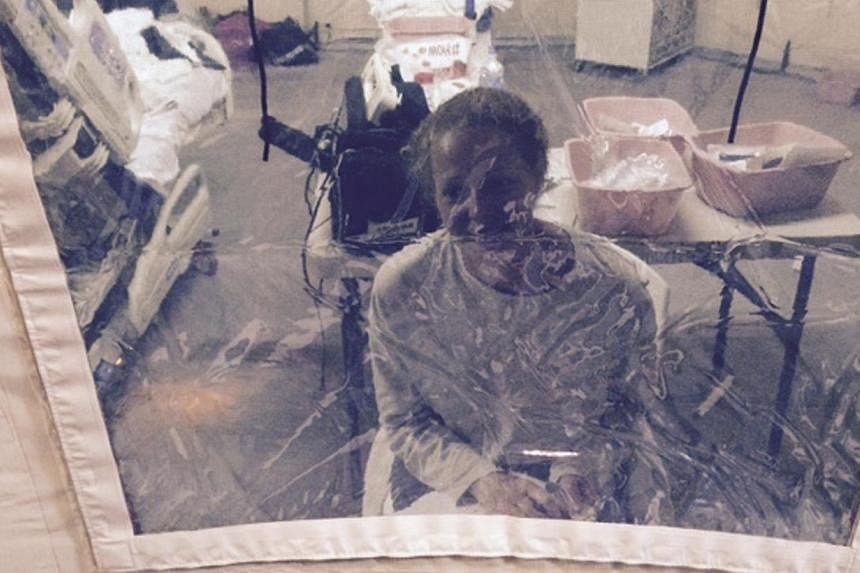This week, Singapore announced that people from three West African countries caught in the Ebola outbreak must apply for entry visas if they wish to visit. This is part of Singapore's screening process at air, land and sea checkpoints.
But supposing a person infected with Ebola makes it to our shores anyway. Say he is symptom-free when he lands. The screening won't pick him out, and he will go anywhere he pleases, coming into contact with many people.
What then?
Hopefully, local doctors and nurses maintain a high level of suspicion, so that he is quickly diagnosed when he presents himself for treatment after symptoms do develop, and is then isolated meticulously for treatment.
What happens next is that all those who came into contact with him would have to be tracked and quarantined at home for 21 days, the incubation period before symptoms appear.
The authorities assert that Ebola patients are not infectious until they have symptoms. This may be as soon as two days after exposure, typically eight to 10 days but certainly within 21 days of being infected, it is asserted.
However, one may ask how true it is that the incubation period - and therefore the quarantine period - is just 21 days. If it were actually longer, would ending the quarantine at 21 days potentially imperil more of us?
The 21-day figure was statistically determined but has not been verified with lab tests of patients during the incubation period before they developed symptoms.
In one study of Ebola outbreaks between 1976 and 2000, the mean incubation period was found to range from 3.35 days to 12.7 days.
In the current outbreak, the World Health Organisation estimates the mean incubation period to be 11.4 days, with the upper limit - at the 95 per cent confidence level - being 21 days.
But what is the 95 per cent confidence level that leads to the magic number of 21 days?
What it means is simply that, if the same actual patients in this outbreak were studied again several times to assess the lengths of their incubation periods, statistical analysis says that "21 days" would capture within it the true average in 95 per cent of cases.
However, in a new study just published in the well-regarded journal PLOS Currents Outbreaks, Drexel University experts in the United States statistically modelled all available data of Ebola outbreaks, and the 21-day period fell a little short. There was a 0.2 per cent to 12 per cent chance that symptoms might appear only after 21 days.
At a higher confidence level of 99 per cent, the incubation period could well be as long as 31 days.
So why was the 95 per cent confidence level - and thus 21 days - chosen?
The reason was that it was found to be the optimal balance between the social and economic benefits of quarantine to society as a whole versus the social and economic costs of quarantine that affected individuals shoulder.
But even if we accept 21 days, is it actually true that the patient cannot infect others if he is symptom-free? Has it been factually established that the patient does not shed Ebola virus in his body fluids, including perspiration, while he has no symptoms?
The answer is not known.
There is no published research where scientists measured the Ebola virus load in infected persons before they developed symptoms.
The data that we do have since 2004 is that of blood levels of the virus load in Ebola patients on the very first day they have symptoms, when experts say they can infect others.
At this point, the virus levels are very high, suggesting there would have been significant virus loads near the end of the symptom-free period.
If so, virus shedding may well occur in the last few days of incubation.
If this is correct, then the official position that patients are not infectious during the incubation period is an approximation to the truth to calm the public.
At its Oct 5 press briefing about the first person - a nurse - to catch Ebola on US soil, the Centres for Disease Control and Prevention asserted that there was "zero chance" of catching Ebola from an asymptomatic patient. It may have calmed the public but it was based only on anecdote, not scientific fact. It would have been more circumspect instead to say there was "very low risk".
Whether a symptom-free Ebola patient is infectious or not, at least in the last few days of his incubation period, may actually depend on the particular infection.
The Drexel study questions the science of stopping at 21 days that is accepted as public policy, balancing costs and benefits at a 95 per cent confidence level.
This suggests the science implies that we might want to think about a quarantine period that is even longer than 21 days.
Of course this would be extremely onerous a burden to impose upon contacts who will have to be quarantined.
Quarantines minimise the risk of harm to everyone whereas those quarantined shoulder nearly all the economic, social and mental costs.
But extraordinary circumstances call for extraordinary sacrifices. So if quarantines under Ebola vigilance need to be longer than 21 days for us to be more than very sure, then maybe that is what we will need to do.
Let's just hope we never have a case on these shores and never have to quarantine any contacts.

